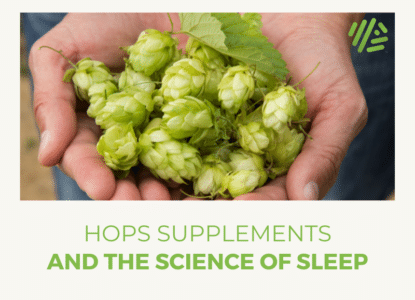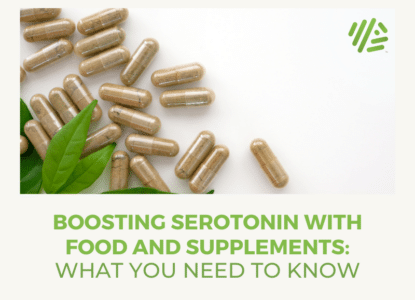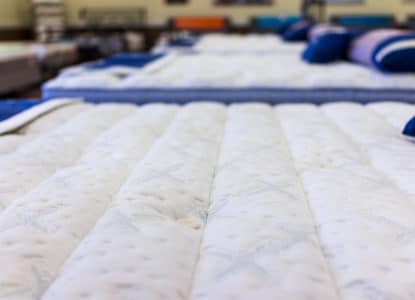My Experience With Pycnogenol for Jet Lag

Contents
What is pycnogenol?
Pycnogenol is pine bark extract that is grown in southwestern France. It acts as a potent free-radical scavenger, with active compounds including bioflavonoids and procyanidins that help improve cellular defense; circulatory, joint, and cardiovascular function; immune response; and skin health. The particular dose I took was 100 mg per day in one vegetarian capsule. It also contained rice flour, hypromellose (for the capsule), and ascorbyl palmitate. Procyanidins are one of the main components of pycnogenol in addition to phenolic acids. 1 Procyanidins are “biopolymers of catechin and epicatechin subunits, which are recognized as important constituents in human nutrition.” Where have we heard of catechin and epicatechin before? Ah yes, green tea. Procyanidins are a class of flavonoids, while phenolic acids derive from benzoic and cinnamic acids. These all have antioxidant properties, which help protect against oxidative stress.Pycnogenol health benefits
So we know that pycnogenol works as a free-radical scavenger, and it’s a strong one — it doubles the intracellular synthesis of antioxidative enzymes. 1 It also helps regenerate and protect vitamins C and E and acts as an anti-inflammatory. A few other key benefits of pycnogenol according to this comprehensive review:- It’s effective in treating chronic venous insufficiency and retinal micro-hemorrhages;
- It may protect against UV-radiation-induced erythema, a reddening of the skin;
- It can improve lung function in asthma patients and positively alter the immune response in people with Lupus;
- In smokers, it has been shown to prevent smoking-induced platelet aggregation while patients with cardiovascular disease have seen dilation of the small blood vessels (increasing blood flow and decreasing blood pressure);
- The phenolic acids in pycnogenol may smooth muscle spasms, thus helping to relieve pain from menstrual cramps;
- It may also reduce the severity of menopausal symptoms; 2
- It may improve our skin 3 and, in topical form, reduce scar formation; 4
- ADHD patients may see improved cognitive function in terms of how pycnogenol affects glutathione levels; 5 and
- Pycnogenol can increase nitric oxide production. Combined with L-arginine, it may improve erectile dysfunction. 6
My jet lag experiment with pycnogenol
So, how worried was I about jet lag before my trip? A little worried. Because I only had five full days overseas to do everything I wanted to do, taking out two days completely devoted to travel, I didn’t want to be zoned out for any of it. Because I’d never experienced jet lag before, I wanted to know what it would feel like so I could recognize if the pycnogenol was working or not. (In one study, a daily 50 mg dose of pycnogenol for a week starting two days before travel was found to have reduced jet lag symptoms in a test group compared to the control group, so I was hopeful and was planning to take 100 mg daily.) Jet lag is also referred to as “circadian desynchrony,” and is a sleep disorder. The body’s circadian rhythm just can’t keep up with rapid travel, and the more time zones crossed, the worse the jet lag. The timing of flights also matters, and the elderly are especially affected by jet lag when doing significant travel. 7 A few of the key symptoms of jet lag, which take place after crossing at least two time zones, include:- Disturbed sleep
- Daytime fatigue
- Decreased ability to perform mental and physical tasks
- Reduced alertness
- Headaches
My experience with pycnogenol
How many time zones did I cross? Six! But the time difference from Austin to Amsterdam was seven hours. And now that I know going to Amsterdam may be worse than coming back home (east vs. west), I was especially anxious to get started on pycnogenol right away. Here’s how my experience went.Day 1 – two days before travel
On a Monday two days before my flight, I took one dose of pycnogenol, as recommended by John. I took it in the morning with my breakfast, along with my usual 200 mg dose of magnesium that I take daily. I decided in addition to packing light for a weeklong trip where we’d be doing a lot of travel by train in two countries, some day trips with just a backpack, I’d only pack enough loose supplements that could fit in my purse, so I threw in 14 capsules of magnesium and 7 capsules of pycnogenol. I felt a little sleepy and out of it on Day 1, but that could have been the cold that was coming on.Day 2 – one day before travel
I’m feeling better on Day 2 and not at all loopy, which may or may not have been the pycnogenol. However, later that night I started getting a scratchy throat, and by the morning of Day 3 and waking up at 5:30 a.m. for my first flight, I had developed a cold. Just what you want when you’ll be up in the air in a metal box for 10-plus hours!Day 3 – flight(s) to Europe
Our first step was waking up early to drive to the Austin airport for our first flight to Chicago, which was 3 hours. We had about a four-hour layover between that flight and our international one to the Netherlands, which was only 7 hours. At this point though, I have a bad head cold. I had packed some Zzzquil at the suggestion of a friend who travels often to help me fall asleep during the day on the plane. Since this was my first international flight, I didn’t know what to expect, but I was able to get in a few hours of shut-eye on that freezing-cold jet, holding a Kleenex to my mouth half the flight. My mother was sick with an even worse-sounding cold. Would this entire trip be a germy bust?Day 4 – landing in Europe
We landed in Amsterdam about 7 a.m. their time, or midnight ours. It didn’t feel too bad waking up on the plane for breakfast in our seats at around 5 a.m. Amsterdam time, but my cold symptoms continued through the morning. We had a second breakfast at a pancake shop in Amsterdam around 9 a.m. that was hard to make it through alert and with it, but mostly because of my cold, I think. But after a two-hour nap at 1 p.m. Amsterdam time, I awoke refreshed and felt completely adjusted to the time zone. That’s just eight hours after landing.Day 5 – a day without any travel
We spent this day, Friday, mostly lounging around but doing some walking and taking a nice bicycle ride through the Dutch countryside. I woke up again feeling great, and in addition to pycnogenol and magnesium, was taking one dose a day of a natural antihistamine made in the Netherlands (and not in English) bought at a Dutch train station. Toward the end of the day, my cold is mostly gone.Days 6-8 – three heavy travel days
We spent the next few days on buses or trains, traveling around Holland and Belgium, seeing sites, and enjoying our vacation. My sleep schedule was fully adjusted to the local time, though we did take a nap in the early evening Day 6. Overall, I felt good all weekend into Monday.Day 9 – returning to the U.S.
On Tuesday, we woke up at 6 a.m. Amsterdam time and spent most of the day traveling. First, a two-hour train ride to Amsterdam (with a few transfers) to the airport. Then, a longer flight going back to the U.S., about nine hours. I didn’t sleep much on the flight, maybe a total of 30-45 minutes. After that, a poorly planned six-hour layover before we could get on our flight home to Austin from Chicago (note to self: make layovers three hours max). That flight was then three hours, again. I had a few awkward moments falling asleep in Chicago’s airport, and then a few more on the last flight home, sleeping almost the entirety of that trip. We arrived at the airport, then drove 25 minutes home to our dog and our comfy bed, and passed out around 11:30 p.m. Austin time — more than 24 hours after we’d started our journey home.Day 10 – first full day back
Surprisingly, much like the lack of jet lag on the way to Europe, I experienced very little to no jet lag when continuing the pycnogenol after we were back home. That’s after being awake for virtually an entire 24 hours. I ended up sleeping for six hours on the first night home, an hour and a half less than my ideal, but woke up feeling fine at about 7:30 a.m. Austin time. Since I didn’t want to go back to sleep in case it threw my schedule out of wack, I just started work early that day. I only felt a little sleepy in the afternoon, but that is typical for me, particularly when I’m drinking caffeine. In that study I briefly mentioned earlier on pycnogenol and jet-lag symptoms, researchers performed a brain CT scan within the first 28 hours after participants’ flights ended. It’s interesting to note that of the 38 people who took pycnogenol compared to 30 people in the control group, the difference in jet-lag symptoms was “statistically significant,” particularly in the cerebral edema score.“The short-term memory was significantly altered in the control group and associated to edema and swelling of the lower limbs. The score (and the level of edema) was comparatively higher in a subgroup of hypertensive subjects in the control group. Minor alterations of cardiac function were observed in association with de-stabilisation of blood pressure. Fatigue was also significantly higher in the control group in comparison with the Pycnogenol group.”The duration of jet lag also was significant. In the control group, symptoms lasted on average for more than 39 hours. In the pycnogenol group, symptoms were reduced to a duration of just over 18 hours. Now, I thought my jet lag was over after 8 hours, but realistically, it probably wasn’t and I was just tinged with optimism. I definitely was within that 18-hour range, though.



